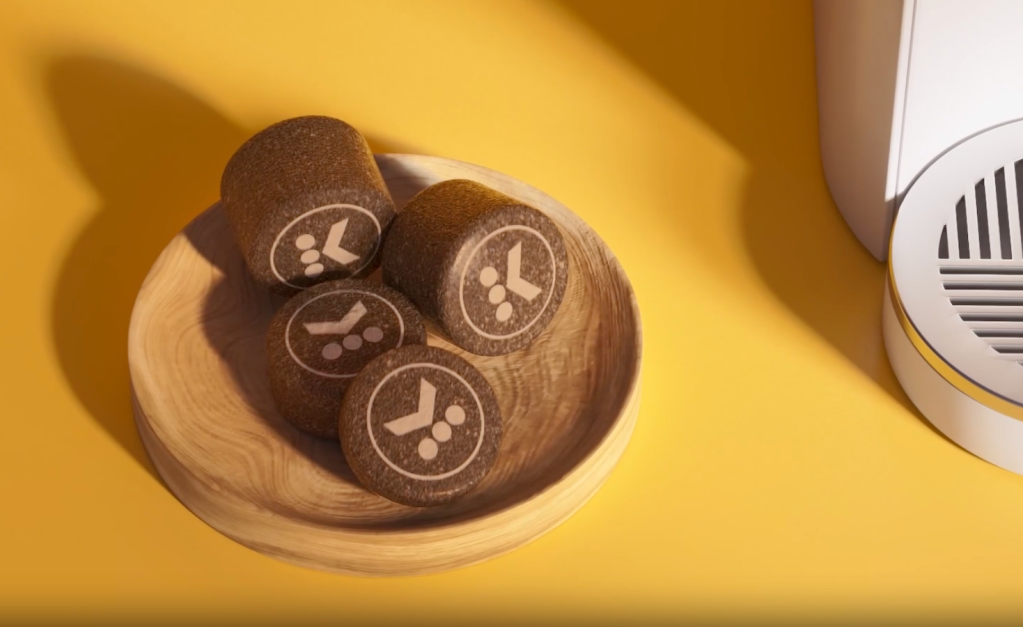Key takeaways
- Years of persistence and experimentation led to a biodegradable coffee pod that improves brewing performance.
- Keurig Dr Pepper backed the innovation once it proved both sustainable and appealing to consumers.
- Collaborating with customers and potential competitors were key for development.
Neha Mallik had plastic coffee pods in her crosshairs when she joined Keurig Dr Pepper nearly nine years ago. Now, the biodegradable pods she helped to innovate are poised to overturn the company’s coffee-making market. Consumers are testing them, and a production plant is rising.
“I was really hellbent on disrupting the K-cup,” said Mallik, Keurig Dr Pepper’s director of product management. However, it took several years in her job as a brand manager before she began to tinker with alternatives to single-use, plastic-packed java.
“There was me, one coffee developer and one compliance engineer, and we kind of went for broke and started working on this idea,” Mallik said at Circularity 25 in Denver on April 29.
Inspired by baristas tamping down grounds for espresso, they sought to compact the coffee tightly enough to maintain its patty shape without a container. The notion had floated in the “collective coffee consciousness” for more than a decade, she said. “We went through many, many rounds of prototyping it that way.” Along the way, the new format also yielded a stronger brew. “That was the first happy accident.”
However, the team realized those naked coffee pods would not survive distribution. The team tried beeswax before landing on an algae-based coating that kept the pods intact. Their prototyping advanced in 2021 in the company lab with a small pilot line of coffee pods. The team used a hand crank to encapsulate roasted and ground coffee in a layer of alginate.
Another happy accident
Visits to the R&D lab in Burlington, Massachusetts, which were scarce during COVID-19 lockdowns, ramped up as the pandemic faded.
“That was happy accident No. 2, where we were playing around with different pressure levels and brewing through this algae coating, and found that it can tolerate up to like 200 pounds per square inch,” Mallik said. “So we can now brew espresso. It was like, Whoa, man, this is opening up an entire new world, which we’re not playing in today at all.”

After some unfruitful internal lobbying, the team pitched the pods to the C-suite with a hands-on demonstration. “That’s when the CEO was like, ‘That’s the future, period. That’s what we need to be doing,’” Mallik recalled.
The organization galvanized to disrupt how Keurig had brewed coffee since 1998 — and Mallik’s team grew.
Today, about 200 consumers are beta-testing the pods, called K-Rounds, in their homes, providing daily data that helps with product refinement.
“What we found was the ability to brew multiple types of coffee with the same system but with improved extraction,” Mallik said. “That’s actually what people are going to open their wallet for. And then this sustainable pod is really this wow factor, the point of differentiation.”
Asking competitors for help
Collaborating outside the company also helped Keurig Dr Pepper tweak the emerging product, Mallik said. She mentioned reaching out to a Swiss company, CoffeeB, about the alginate formulation it uses for its coffee balls.
Keurig Dr Pepper expects to win third-party certification for pod compostability.
One drawback, for now, is contending with limited supplies of alginate, which the brand orders from France.
The company is bracing to scale the new pods with a new plant in Spartanburg, South Carolina.
“That’s the North Star,” she said, acknowledging that replacing the 40 million Keurig machines will take time. “But that would be the ultimate goal, that eventually this becomes synonymous with Keurig.”
Keurig has about a 30 percent share of the coffee pod market in the U.S. Nespresso, which introduced coffee pods to the world in the mid-1980s and is more popular in Europe, uses aluminum pods rather than harder-to-recycle plastic. In 2023, after three years of research and development, the brand rolled out home-compostable, paper-based pods in several European countries.
The market for coffee pods will grow from $38 billion in 2023 to nearly $58 billion in 2030, according to Grand View Research.




